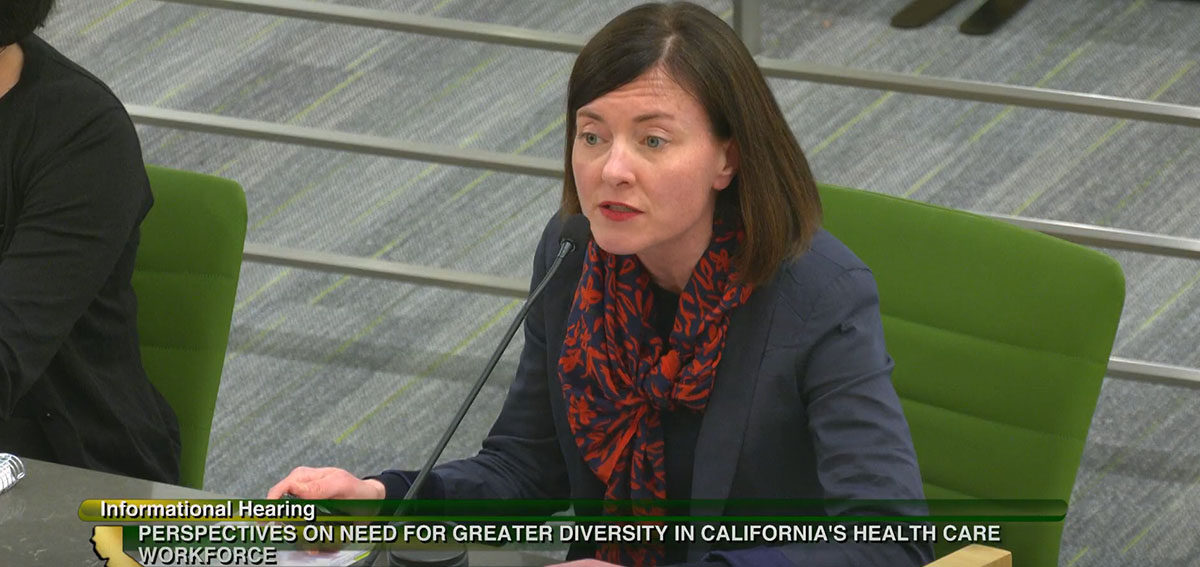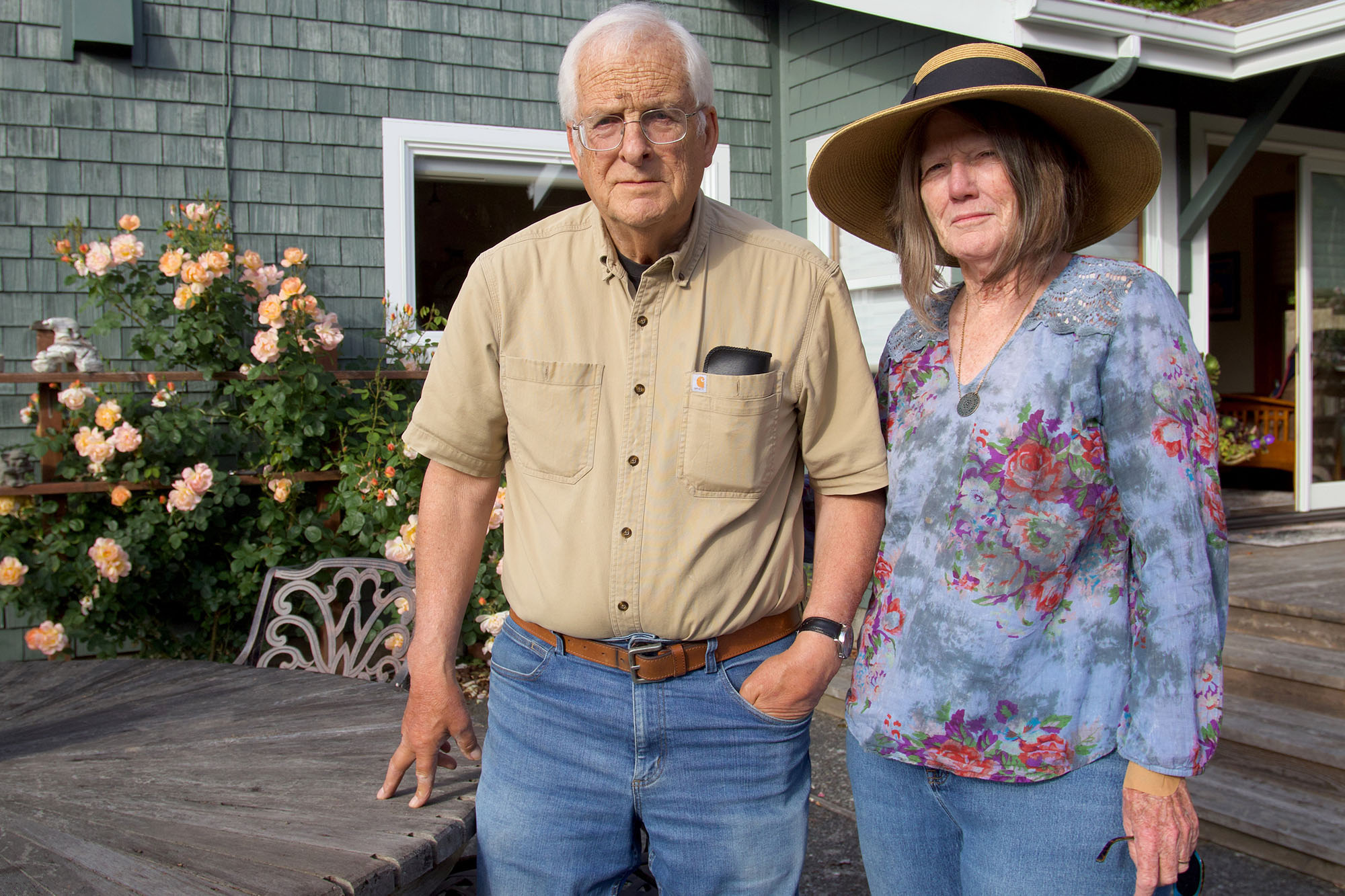|
Getting your Trinity Audio player ready…
|

Why does California need a more diverse health care workforce, and how can such efforts improve patients’ health access, experiences, and outcomes? Health workforce experts, doctors, and community-based organizations tackled these questions at the February 20 Assembly Health Committee informational hearing chaired by Assemblywoman Mia Bonta (D-Oakland). Their main message: legislators should make policies that champion representation and diversity in the health workforce.
Key Points on the Health Workforce for California Legislators
Here are the key messages delivered to the Assembly Health Committee:
• California does not have enough health care workers and the overall workforce does not align with the racial, ethnic, language, or geographic characteristics of the state population — especially the 15 million Californians enrolled in Medi-Cal.
• While California is home to innovative medical education and health workforce training programs — many supported by state dollars — the scale of these efforts has not kept pace with population growth and patient needs.
The lawmakers heard from representatives of the California Health Care Foundation (CHCF), California Pan-Ethnic Health Network, California Black Health Network (CBHN), Latino Coalition for a Healthy California, the California Department of Health Care Access and Information (HCAI), Roots Community Health Center, and AltaMed Health Services, among many other health workforce leaders.
Kathryn E. Phillips, associate director of CHCF’s Improving Access team, testified that only coordinated, sustained investment in education and training will build a health workforce that enables all Californians to receive high-quality care from professionals prepared to meet their needs.
“There are no spot fixes,” Phillips said. “Our health workforce is a critical infrastructure. It’s the infrastructure of care. And just like our roads or our bridges, we need regular assessment. We need infrastructure upgrades. Our workforce deserves more. Our patients need care.”
Experts pointed to a variety of factors in California that need to be addressed for patients to receive equitable care, including:
- Nearly half of California residents identify as Latino/x or Black, yet only 14% of California medical school graduates and fewer than 9% of practicing providers identify as Latino/x or Black.
- Over half (52%) of licensed providers speak English only, while 19% of California households have limited English proficiency.
- Only 3.6% of behavioral health providers are Asian Pacific Islander (API) speakers but API speakers make up almost 10% of the state’s population.
- Latinos/x, who represent 39% of California’s population, are underrepresented among licensees in 47 health professions in every geographic region of the state.
The issue of workforce representation is a personal one to Ilan Shapiro, MD, MBA, chief medical correspondent and medical affairs officer of Los Angeles-based AltaMed. A graduate of a medical school in Mexico City and now a practicing pediatrician in Los Angeles, Shapiro told lawmakers that when he speaks the same language as the patient, the result is positive patient responses and better health care outcomes.
“When a patient actually comes to me, they hear the language [Spanish], and not only the language, but they feel the culture,” he said. “And I can actually talk about vaccines, talk about the tés — the teas for remedies — and actually connect not only with the parents but also with their kids. This is the future of our communities.”
A Successful Program Increases Representation
Shapiro pointed to the success of such programs as the Licensed Physicians from Mexico Pilot Program, which imports doctors to practice at Federally Qualified Health Centers in California that provide care in communities that have consistently lacked Spanish-speaking physicians. Currently, 24 doctors from Mexico serve the majority Latino/x and farmworker populations at clinics in Monterey, San Benito, Tulare, and Los Angeles Counties. Each physician is licensed by the Medical Board of California (PDF) to work in the state for three years.
As of December 2022, the doctors had treated tens of thousands of Californians and met expectations for quality and safety. Shapiro told lawmakers that California has the opportunity to build on those accomplishments.
“Do we have a solution for absolutely everything?” Shapiro said. “Sadly, no. But I think that we’re on the right path where we’re bringing physicians who actually understand the language, and they’re culturally concordant. That can make a huge difference.”
Meron Agonafer, the CBHN policy and legislative affairs manager, said underrepresentation of Black health care professionals perpetuates long-standing health disparities. She pointed to research in CHCF’s Listening to Black Californians study that 1 in 4 Black Californians avoid care out of fear of being mistreated or disrespected.
In response to that research, CBHN launched the “HOW DO I…” campaign to help Black Californians navigate the health system, advocate for their family, friends, and themselves, and take action when faced with discrimination.
“California Blacks have clearly expressed they are more likely to seek care and adhere to treatment plans if the health care is provided by those who look like them and reflect their community,” Agonafer said.
An Agenda for Health Workforce Diversity
Panelists suggested to legislators that state leaders can expand existing efforts to increase diversity and representation, including:
- Improve the disaggregation of data to better understand the language needs of Medi-Cal patients and the impact of the shortfall of health care providers fluent in languages other than English.
- Increase academic scholarship funding and student loan repayment resources for early career professionals who want to work in underserved communities similar to those they come from.
- Advance holistic admission processes at all health profession schools in California, especially medical, dental, and pharmacy programs, to get more students to practice in rural and low-income communities instead of leaving the state.
- Bolster partnerships between California Community Colleges and California State University campuses, where students from underrepresented communities are provided affordable pathways to allied health professions. These systems have caused a significant increase in diversity within the nursing workforce.
The experts at the hearing highlighted recent successes by the state and philanthropic partners to diversify the health care workforce, including:
- Establishing HCAI, which plays a key role in workforce investment, data collection, and reporting.
- Supporting pipeline programs such as UC Programs in Medical Education (UC PRIME) and California Medicine Scholars Program, which identify, recruit, and support students from underrepresented backgrounds, including students of color, rural students, and first-generation college students.
- Expanding support for schools with admissions practices that elevate students’ lived experiences or resemble those of California’s Medi-Cal population, such as Charles R. Drew University of Medicine and Science and the University of California Davis School of Medicine.
“[As a state] we need to work better together to bring resources to the programs and the communities that need them most, and we need to begin rewarding the institutions that deliver the outcomes our state cares most about,” said Phillips. “We need bold action, not just incremental progress.”
Authors & Contributors

Sarah Jimenez
Sarah Jimenez was a senior communications officer based in CHCF’s Sacramento office from 2023-2025.
Before joining CHCF, Sarah served as communications directors for the National Center for Youth Law and the California Budget & Policy Center. She was responsible for leading strategic communication initiatives with senior leadership and policy analysts and promoting the use of the organizations’ research and information in key policy discussions. She previously served as a senior strategist for Paschal Roth Public Affairs, working on statewide affordable housing and mental health voter initiatives. She also was the communications and outreach manager for the County Welfare Directors Association and assisted county human service departments in Affordable Care Act implementation.
Sarah holds bachelor of arts degrees in print journalism and gender studies from the University of Southern California.





